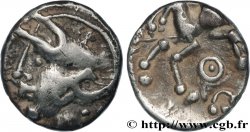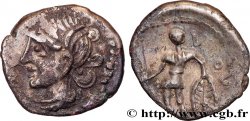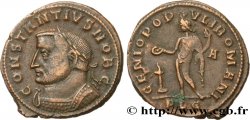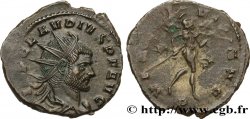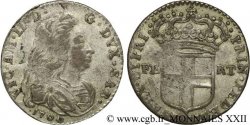v25_0642 - GALLIA - GALLIA DELLO SETTENTRIONALE - ÆDUI (BIBRACTE, Regione dello Mont-Beuvray) Quart de statère en électrum à la lyre
MONNAIES 25 (2006)
Prezzo di inizio : 220.00 €
Valutazione : 450.00 €
Prezzo realizzato : 385.00 €
Numero di offerte : 3
Offerta maxima : 464.00 €
Prezzo di inizio : 220.00 €
Valutazione : 450.00 €
Prezzo realizzato : 385.00 €
Numero di offerte : 3
Offerta maxima : 464.00 €
Tipo : Quart de statère en électrum à la lyre
Data: c. 70-50 AC.
Nome della officina / città: Autun (71)
Metallo : elettro
Diametro : 10,4 mm
Asse di coniazione : 11 h.
Peso : 1,62 g.
Grado di rarità : R2
Commenti sullo stato di conservazione:
Bel exemplaire frappé sur un flan court et épais. Faiblesse de frappe au droit, mais revers en fort relief avec des cassures de coins périphériques
Diritto
Titolatura diritto : ANÉPIGRAPHE.
Descrittivo diritto : Tête humaine laurée à droite, la chevelure stylisée ; grènetis.
Rovescio
Titolatura rovescio : ANÉPIGRAPHE.
Descrittivo rovescio : Cheval galopant à droite ; au-dessus du cheval, l'aurige ; lyre sous le cheval.
Commento
L'aurige est très stylisé ; sa main (censée tenir les rênes) est composée de trois doigts qui se terminent par des globules se confondant eux-mêmes avec la crinière bouletée. La cassure de coins entre les jambes du cheval rend difficile l'interprétation du symbole décoratif ; il semble néanmoins qu'il s'agisse d'une lyre. Seul un exemplaire (dont le droit est très proche du nôtre) est connu avec une rouelle au revers.
The charioteer is highly stylized; his hand (supposed to hold the reins) is composed of three fingers that end in globules that themselves merge with the balled mane. The breakage of the corners between the horse's legs makes it difficult to interpret the decorative symbol; nevertheless, it seems to be a lyre. Only one example (whose obverse is very close to ours) is known with a wheel on the reverse
The charioteer is highly stylized; his hand (supposed to hold the reins) is composed of three fingers that end in globules that themselves merge with the balled mane. The breakage of the corners between the horse's legs makes it difficult to interpret the decorative symbol; nevertheless, it seems to be a lyre. Only one example (whose obverse is very close to ours) is known with a wheel on the reverse








 Segnalare un errore
Segnalare un errore Stampate la pagina
Stampate la pagina Condividi mia selezione
Condividi mia selezione Fai una domanda
Fai una domanda Consegnare / vendere
Consegnare / vendere
 Descrittivo
Descrittivo
